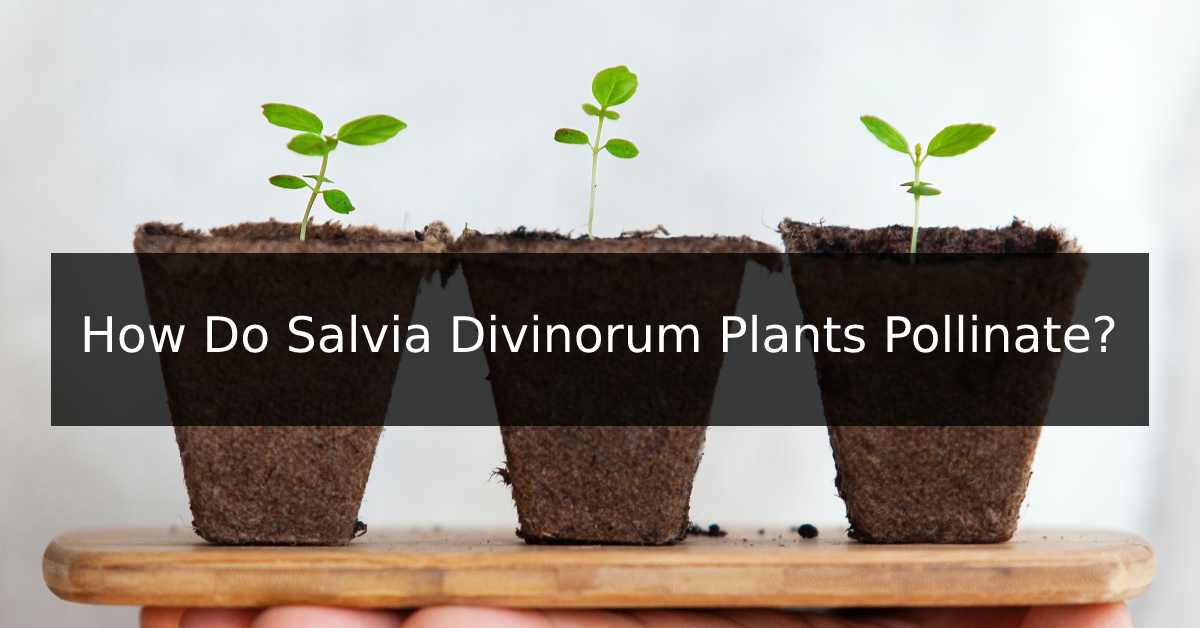Salvia divinorum is a unique plant that has been used for centuries by the Mazatec people in Mexico for spiritual and medicinal purposes. While the plant is known for its potent psychoactive effects, little is known about its pollination and reproductive processes.
Salvia divinorum is a member of the mint family and is native to the Sierra Mazateca region of Mexico. The plant can grow up to 1 meter in height and has large green leaves that are covered in fine hairs. While Salvia divinorum is primarily propagated through cuttings, the plant can also reproduce sexually through pollination.
The flowers of Salvia divinorum are small and tubular in shape, with a two-lipped structure that allows pollinators to easily access the reproductive organs of the flower. The flowers can be white or purple in color, and they typically bloom from late spring to early summer.
The pollination of Salvia divinorum is carried out by insects such as bees and butterflies. The flowers of the plant produce nectar, which serves as a reward for the pollinators. As the insects feed on the nectar, they come into contact with the reproductive organs of the flower, including the anthers and the stigma.
The stamens of the Salvia divinorum flower produce pollen, which is transferred to the stigma of the same flower or another flower on the same plant. The stigma, which is located at the top of the style, is covered in a sticky substance that traps the pollen grains.
Once the pollen grains have been transferred to the stigma, they germinate and grow down through the style to the ovary. The ovary of the flower contains the ovules, which are fertilized by the pollen to produce seeds. Each flower of Salvia divinorum can produce multiple seeds, which are contained within a small, dark, nut-like fruit.
While Salvia divinorum can reproduce sexually through pollination, the plant is primarily propagated through vegetative means, such as cuttings. This is because the seeds of the plant are not always viable and can take a long time to germinate. Additionally, the potency and characteristics of the plant can vary significantly when propagated from seed, making vegetative propagation a more reliable method for growers.
How Does “Propagating Through Vegetative Means” Work?
When we say salvia divinroum is usually “propagated through vegetative means”, basically we are saying “cutting” or “cloned”.
[ Keep Reading: How to clone salvia divinorum plants]
Propagating Salvia divinorum through vegetative means involves taking a cutting from a healthy, mature plant and using it to create a new plant. This method of propagation is preferred by many growers because it allows them to produce plants that are genetically identical to the parent plant, which ensures that the new plant will have the same characteristics, including potency and growth rate.
To propagate Salvia divinorum through vegetative means, the grower first selects a healthy, mature plant that is free of pests and diseases. They then take a cutting from the plant, which typically involves cutting off a stem or branch that is 5-6 inches long and has several leaves.
Once the cutting has been taken, the grower removes the lower leaves and dips the cut end of the stem into a rooting hormone. This helps to stimulate root growth and increases the chances of the cutting successfully rooting.
The cutting is then planted in a well-draining soil mix or placed in a container filled with water or another rooting medium. The cutting should be kept in a warm, humid environment with indirect light until it has developed a strong root system.
After several weeks, the cutting should begin to produce new growth and can be transplanted into a larger pot or planted directly in the ground if the conditions are suitable. With proper care and maintenance, the new plant should grow and thrive, producing leaves that can be harvested for use in spiritual or medicinal practices.
Why Are Salvia Divinorum Seeds So Rare?
[ Keep Reading: Can I buy salvia divinorum seeds? ]
Salvia divinorum seeds are relatively rare for several reasons:
- Low viability: Salvia divinorum seeds are not always viable, which means that they may not germinate or grow into healthy plants. This is because the plant is primarily propagated through vegetative means, such as cuttings, rather than through seed.
- Low fertility: Even when Salvia divinorum flowers are pollinated, the resulting seeds may not be fertile. This is because the plant is known for producing sterile flowers that are not capable of producing viable seeds.
- Long germination time: Even when Salvia divinorum seeds are viable, they can take a long time to germinate. In some cases, it can take up to a year or more for the seeds to sprout, which can make growing the plant from seed a challenging and time-consuming process.
- Propagation by cuttings: Salvia divinorum is primarily propagated by cuttings, which can produce plants that are genetically identical to the parent plant. This means that there may be little demand for seeds among growers, as they can easily propagate the plant through other means.
Where does salvia divinorum naturally grow at?
Salvia divinorum is a perennial herb that is native to the Sierra Mazateca region of Oaxaca, Mexico. The plant grows naturally in the mountainous areas of this region, which are characterized by a subtropical climate with high humidity and frequent rainfall.
In the wild, Salvia divinorum grows in the understory of forested areas, often near streams or other sources of water. The plant is adapted to the humid conditions of the region and prefers shaded areas with well-draining soil.
Salvia divinorum is also cultivated in other parts of the world, including the United States, Europe, and Asia. However, the plant is typically grown in controlled environments, such as greenhouses, as it requires specific growing conditions to thrive.
It is worth noting that Salvia divinorum is a protected plant species in Mexico, and it is illegal to collect or export the plant without a permit. While the plant can be found in cultivation in other parts of the world, it is important to ensure that any Salvia divinorum plants or leaves purchased are sourced legally and ethically.
Sources:
- “Salvia divinorum.” Drugs and Lactation Database (LactMed), National Library of Medicine, 2006.
- Valdés, L. J., & Díaz, J. L. (1973). “The use of plant hallucinogens and their relationship to Mexican Indian culture.” In Hallucinogens and Shamanism (pp. 49-64). Oxford University Press.
- “Salvia divinorum.” Plants for a Future, 2008.
- “Salvia divinorum.” World Health Organization, 2016.
- Rätsch, C. (2005). The Encyclopedia of Psychoactive Plants: Ethnopharmacology and Its Applications. Park Street Press.
- “Salvia divinorum.” United Nations Office on Drugs and Crime, 2021.
- Hanes, K. R. (2001). “Antidepressant effects of the herb Salvia divinorum: a case report” Ronin Publishing.
- Valdés, L. J., Hatfield, G. M., Koreeda, M., Paul, A. G., & Aguirre, C. (1987). “Studies of Salvia divinorum (Lamiaceae), an hallucinogenic mint from Mexico.” Economic Botany, 41(2), 283-291.



